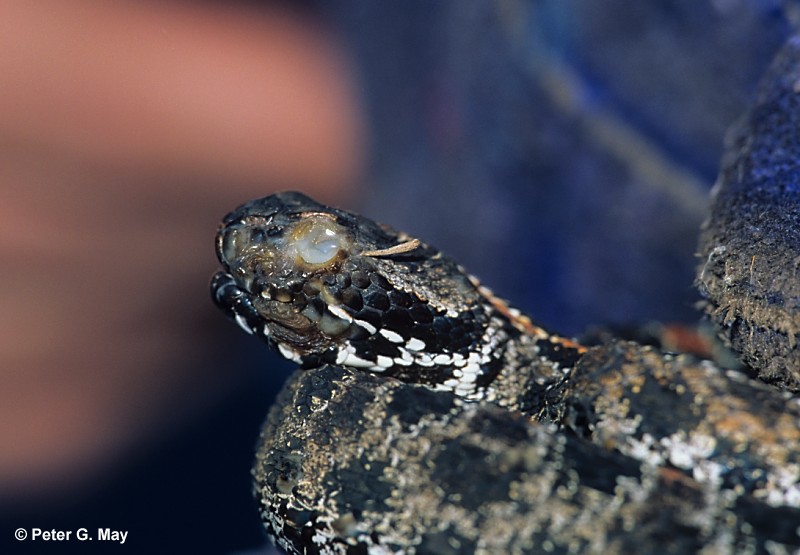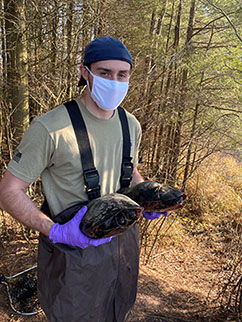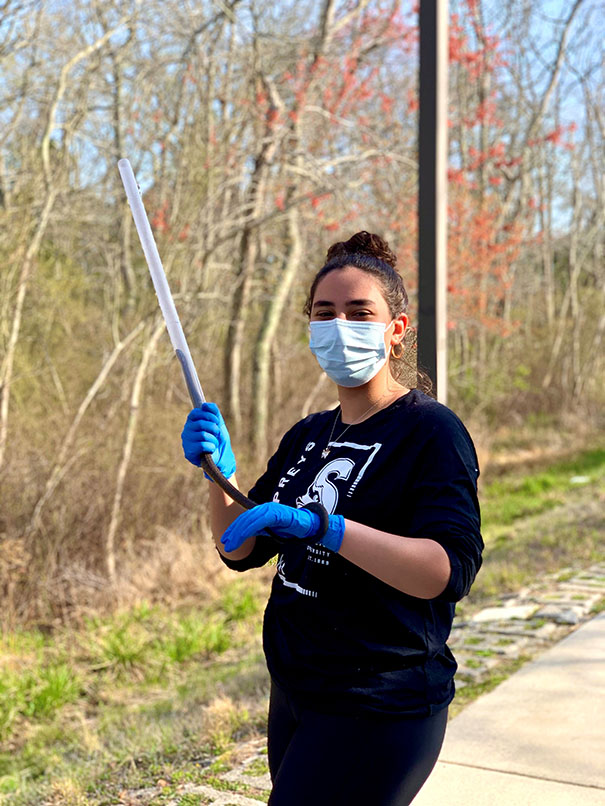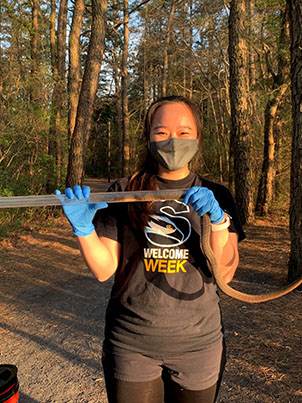Fall 2021 Issue
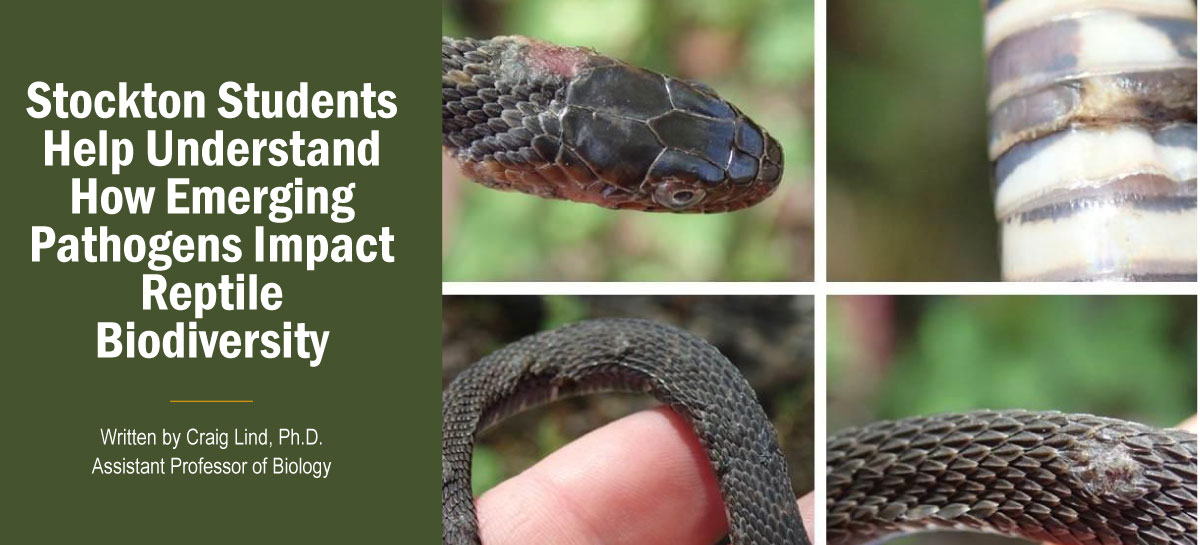
Photo credit: USGS.
Emerging infectious diseases are an increasing threat to global biodiversity. The COVID-19 pandemic highlights just how rapidly infectious agents can spread in our modern global economy. Human activities including agriculture and the pet trade promote the movement of species across natural geographic barriers and expose animal populations to new pathogens that native hosts share no evolutionary history. The outcomes can be devastating.
Fungal pathogens have hit vertebrate populations particularly hard in the past decades, and poikilothermic vertebrates (i.e. those species whose body temperature fluctuates with the environment) seem predisposed to fungal epidemics and population declines.
Examples include the outbreak of chytridiomycosis which has contributed to the global decline in frog populations and the devastating impacts of white-nose syndrome on North American bat populations."
Recently, an emerging fungal disease that impacts snakes, creatively dubbed “snake fungal disease (SFD),” has been identified as a threat to North American snake populations. Snake fungal disease is caused by a fungus, Ophidiomyces ophiodiicola (Oo), that invades the host’s skin, resulting in lesions and localized immune reactions (see image). Both the origins of Oo in North America and the impacts of Oo on snake populations are currently unclear, and the scientific community is mobilizing to understand and mitigate its impacts on at-risk populations.
At the Stockton Herpetology Lab, undergraduate students and I have been working together with researchers from across the country to better understand the physiological consequences of SFD in snake hosts. We are specifically interested in understanding the sublethal consequences of infection and the physiological mechanisms that underlie negative disease outcomes. For example, in 2018 and 2019 we published a series of papers demonstrating that SFD-infected pygmy rattlesnakes exhibit evidence of physiological stress and reproductive and immune suppression. We also examine the energetic consequences of infection in snakes and how costs vary in response to environmental conditions (e.g. in response to changing temperatures). We hope that a better understanding of the physiological mechanisms that underlie host-pathogen dynamics can be used to build predictive models and inform the design of effective plans for management. Students in our lab are working on a range of projects aimed at understanding interactions among environment, stress, immune function and disease in reptiles, and we hope that our continued efforts will promote informed approaches to reptile conservation.

